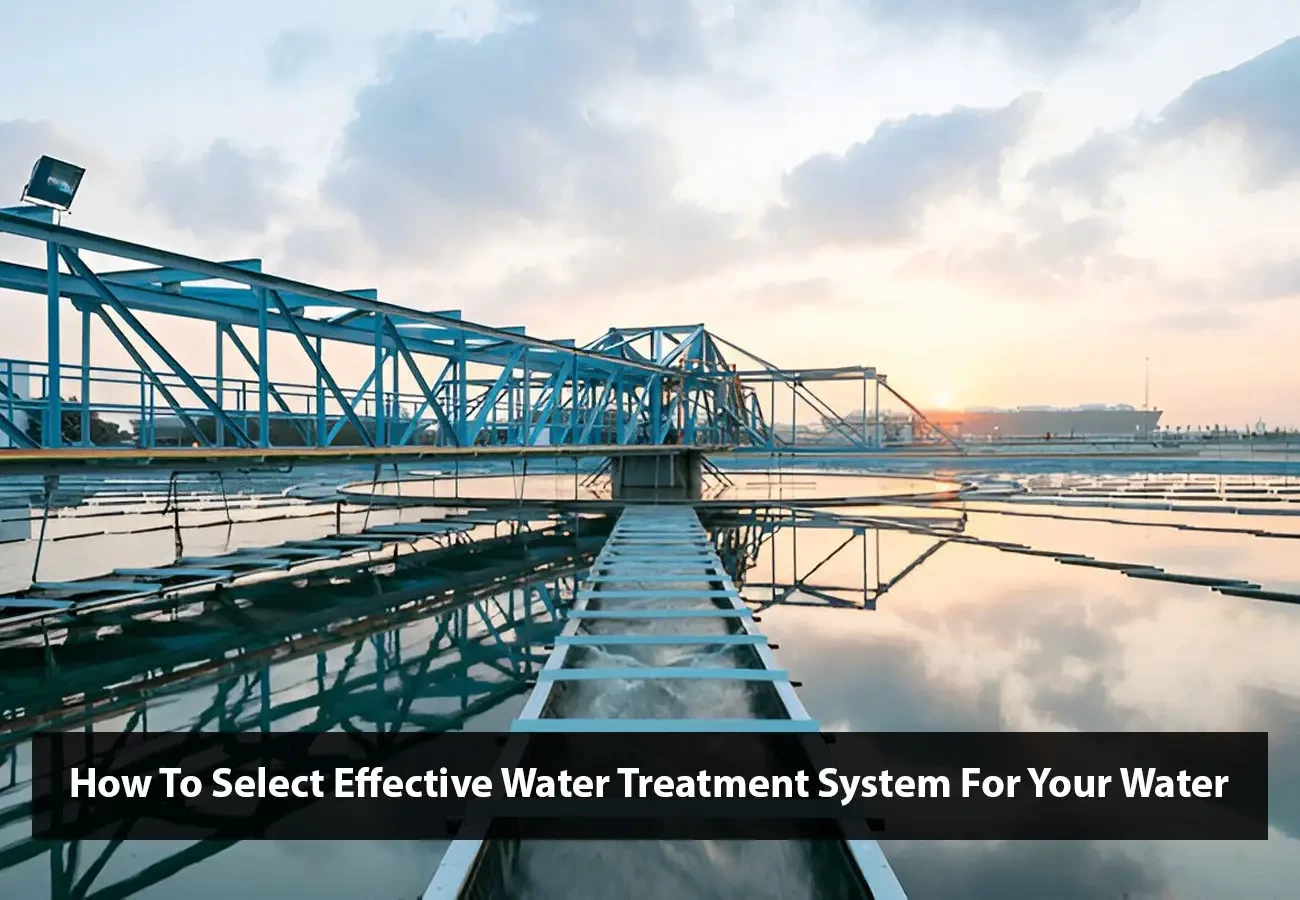How To Select Effective Water Treatment System For Your Water
Water, the source of life, comes in a variety of forms and qualities. From pristine mountain springs to treated tap water, its chemistry can vary quite a bit. Knowledge of the specific nature of your water source is the first step toward selecting an effective treatment system for your water. In this blog, we will take you through the process of determining your water quality and selecting the correct treatment solution for your needs.
- Familiarizing Yourself with Your Water Source
Step one is determining your source of water. This will put you in general terms as far as the probable contaminants involved.
- Municipal Water: Government water supplies will typically be treated to some type of safety measures, but in some instances still have chlorine, disinfection byproducts, and trace amounts of other contaminants.
- Well Water: Private wells can provide access to groundwater, but the quality is extremely variable depending on the geology and proximity to possible sources of contamination. Well water is important to test.
- Surface Water: Rivers, lakes, and ponds are prone to contamination from agricultural runoff, industrial discharge, and other sources. Surface water needs more extensive treatment.
- Rainwater: Collected rainwater may be a potential source of soft water, yet it may become polluted by aerial contaminants and other debris.
- Determining Potential Contaminants:
When you have determined your water source, you should determine the possible contaminants there. The common contaminants are:
- Sediment and Turbidity: Particulates such as dust, clay, and sand can cause water to be cloudy and taste bad.
- Microorganisms: Bacteria, viruses, and protozoa cause waterborne diseases.
- Minerals of hardness: Magnesium and calcium ions can cause scaling, reduce the effectiveness of soap, and affect the taste of water.
- Heavy Metals: Heavy metals like lead, arsenic, mercury, and others are poisonous even in small amounts.
- Nitrates and Nitrites: Nitrates and nitrites impurities may be produced due to agricultural runoff and are toxic in infants.
- Organic Compounds: Herbicides, pesticides, and other organic compounds may contaminate water supplies.
- Disinfection Byproducts: Disinfectants like chlorine can interact with organic substances to create potentially harmful byproducts.
- Radionuclides: Radioactive pollutants like radon may be present in certain water supplies.
- Water Testing: The Key to Successful Treatment:
The most important step in choosing a water treatment system is to have your water tested. A full water analysis will determine the contaminants present and at what concentrations.
- Home Test Kits: These kits can give you a basic idea of your water quality, but they might not be as precise or thorough as professional testing.
- Certified Laboratories: For a more in-depth analysis, it's advisable to send your water sample to a certified water testing lab. They can check for a wide variety of contaminants and provide you with a comprehensive report.
- Testing Frequency: How often you should test your water depends on its source. Well water should be tested every year, while municipal water might only need testing from time to time.
- Choosing the Right Water Treatment System:
Based on your water test results, you can choose the right water treatment system. Here are some common treatment methods:
- Sediment Filters: These filters eliminate suspended particles like dirt, sand, and silt. They come in different sizes and micron ratings.
- Carbon Filters: These filters remove chlorine, unpleasant tastes, odours, and some organic compounds. They are available in granular activated carbon (GAC) and block carbon forms.
- Water Softeners: These systems eliminate hardness minerals (calcium and magnesium) through an ion exchange process.
- Iron Removal Filters: These filters take out iron and manganese from water, preventing staining and enhancing taste.
- Reverse Osmosis (RO) Systems: RO systems eliminate a broad range of contaminants, including dissolved salts, minerals, heavy metals, and organic compounds. They are very effective but can be pricier.
- Ultraviolet (UV) Disinfection: UV systems kill bacteria, viruses, and other microorganisms using ultraviolet light. They work well but do not remove other contaminants.
- Considering Flow Rate and Capacity:
When selecting a water treatment system, consider the flow rate and capacity you need.
- Flow Rate: The amount of water the system can treat per minute or hour. Choose a system that can meet your peak water demand.
- Capacity: The amount of water the system can treat before needing maintenance or filter replacement.
- Analysis of Costs and Maintenance:
Think of the initial purchase price of the system, plus the operating cost over time, including filter changes and power use. Also include the maintenance demands of the system.
- Professional Consultation:
If you are not certain which water treatment system is appropriate for you, seek the advice of a water treatment expert. They can help you determine your water quality, suggest proper treatment, and install the system properly.
- Routine Maintenance:
After you install a water treatment system, you should regularly maintain it to maximize its effectiveness and lifespan. Some of the activities you can carry out include changing filters, scrubbing the system, and checking for leaks.
- Taking an Informed Decision:
Selecting an appropriate water treatment system is an important investment in your health and well-being. By knowing the source of your water, checking for possible contaminants, and testing your water, you can make an informed decision and choose a system that works best for you. Feel free to ask questions and consult professional advice to determine that you get the highest possible water quality for your home or business. Safe and clean water is a valuable asset, and it is well worth taking the time to select the proper treatment technique as an investment that will return dividends for decades to come.


